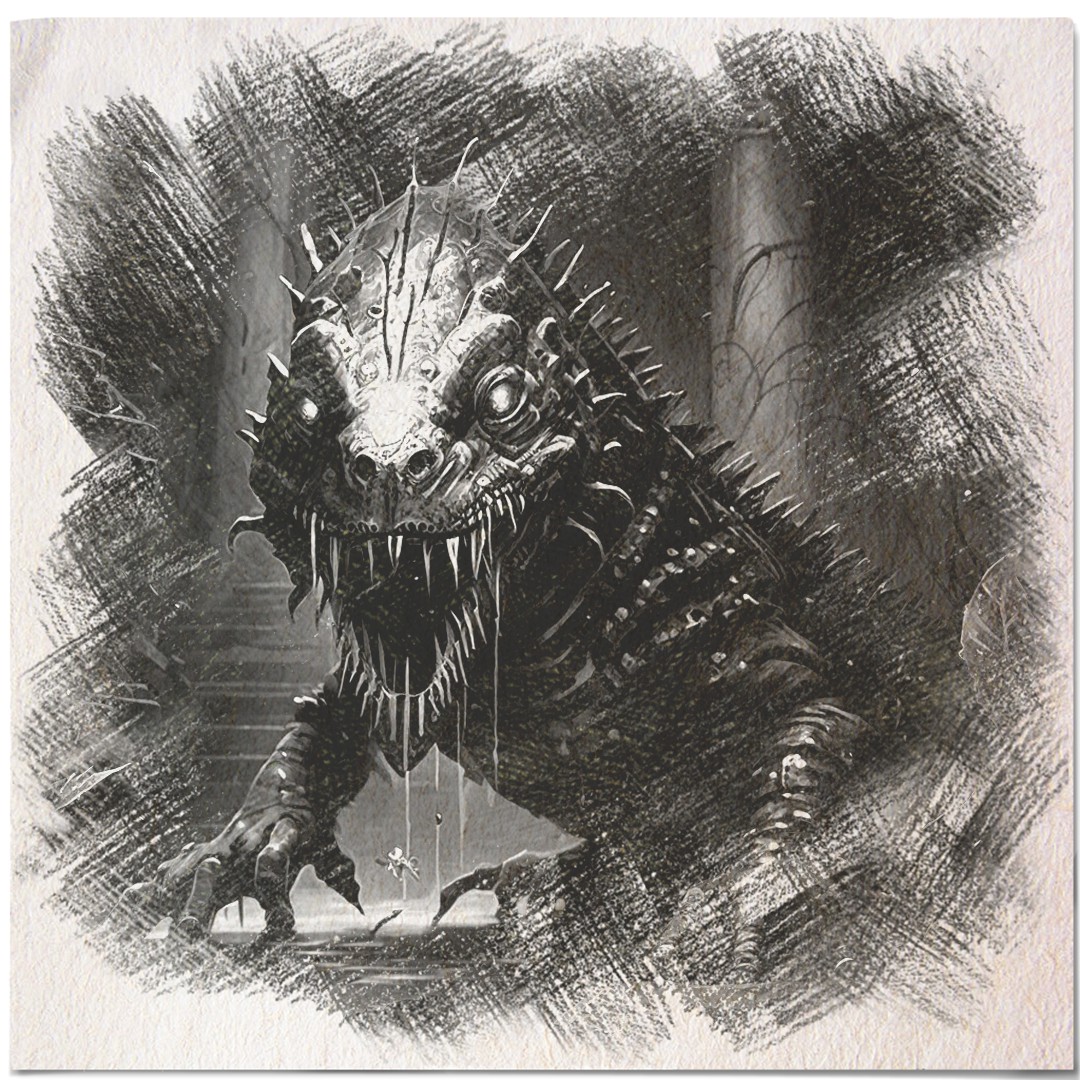Dripfang prowler
I blame an Ancient Order mage on a drunken bender for creating something like this
Exploring a ruin isn’t without risk. Ancient buildings, worn down by time, could collapse. They all too often have their own environment, a bizarre menagerie of creatures that call those ruins home. The dripfang prowler is one of those creatures.
A dripfang prowler is a large, and elusive creature that thrives in ancient mines, ruins, and other underground locations near water. This predator, well adapted to its dark and complex habitat, is a lethal subject of interest to mages, scholars, and Windtracers alike.
Basic Information
Anatomy
The last thing I expected was to find one on the ceiling…
The dripfang prowler is a formidable beast, with an average length of 8 to 15 nindel, a shoulder height of 3 to 5 nindel, and a weight between 200 to 600 tubiks. By Ancient Order measurements, they are 2.4 to 4.6 meters long, 0.9 to 1.5 meters tall at the shoulder, and 90 to 272 kilograms in weight. It has a muscular, lean reptilian frame, similar in shape to a crocodile.
Unlike a crocodile, a dripfang has climbing adaptations of claws and barbed suckers on its feet. This lets the animal navigate the damp walls and floors of its underground world with ease. It has a snout similar to a crocodile but with an additional feature. Along the sides and top of a dripfang’s snout are dozens, if not hundreds, of tiny whisker-like structures called vibrissae. These whiskers act as an enhanced sense of touch and hearing to let the animal study its surroundings.
Prowlers also have a flexible, prehensile tail that acts as a fifth limb. This tail serves as a versatile tool for both capturing prey and maintaining balance while climbing. If used for capturing prey, they ‘cast’ it at victims similar to someone using a fishing rod. Any prey caught is quickly squeezed to choke them unconscious before eating.
The most striking feature of a dripfang is its bioluminescent chitinous plates. These tough, bone-like plates cover its body in long rows and act as a natural camouflage. It allows the creature to blend in seamlessly with its surroundings. A coating of symbiotic slime algae fuels the bioluminescence along the creature’s hide. It allows the dripfang to mimic any ambient light and shadows in a cavern, making the beast nearly invisible to any prey or potential threats.
In exchange for the bioluminescence, the slime algae relies on the dripfang for food. The slime cleans the animal’s scales of fungus and debris that build up from a life in underground caverns. It also keeps the animal’s plates oiled and resilient against cuts or sharp items. This slime is the source of the creature’s name, ‘dripfang’.
Perception and Sensory Capabilities
A dripfang is an ambush predator, so it relies on specialized senses to hunt and understand the world around it. The two primary senses of the usual five are its specialized night vision and its vibrissae, or whiskers, along its snout.
The creature’s night vision is tied to a second inner eyelid that acts as a filter, allowing the creature to see heat patterns and shapes in total darkness. What it may not see with its inner eyelid, a dripfang might identify with its whiskers.
Dripfang whiskers are short, stubby hairs that run along either side of its snout and along its crocodile-like jaw. Those hairs allow the beast to detect changes in temperature and even subtle vibrations in its environment. A dripfang’s whiskers are flexible and can be pulled back against the animal’s snout. In particular, the latter happens when the beast attacks its prey or is swimming.
Lifespan
15 to 20 years
Average Height
3 to 5 nindel (0.9 to 1.5 Ancient Order meters) to the shoulder
Average Weight
200 to 600 tubiks (90 to 272 Ancient Order kilograms)
Average Length
8 to 15 nindel (2.4 to 4.6 Ancient Order meters)
Geographic Distribution






Comments